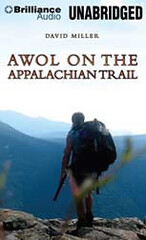
- We looked at The Daily Telegraph ‘s list of twenty best travel books. I mentioned The Happy Traveller (1923) by the Reverend Frank Tatchell, because it’s brilliant and deserves your attention.
- Frommers took us on car journeys in France.
- For younger, poorer travelers, we recommended Lonely Planet’s Europe on a Shoestring,
- Zagat’s guides are the go-to source for restaurants – we thought we’d dine in Paris with them.
- For adventure on a budget, we went with the many guides from Lonely Planet, looking at Nepal and Botswana.
- For adventure at premium prices, we looked at Fodor’s The Complete African Safari Planner
- The Book Haven has a great review of Bill Bryson’s A Walk in the Woods.
- David Miller’s AWOL on the Applachian Trail covered the same ground, but less incompetently than the hapless Bryson and Katz team.
- For classic travel tales we looked at Eric Newby’s A Short walk in the Hindu Kush and Mark Twain’s Following the Equator.
Pack your bags… and head for your armchair!

 Some of my favorite books are travel books. Last month I borrowed a guide to Iceland, and looked especially at the remote northern region known as the Westfjords. Now, I’ve never been to Iceland, have no immediate plans to do so, and frankly my partner in all things indicates that I am a lunatic for even thinking about it. But now I now where to find the best place to eat locally caught fish – and, oh look! A pizza joint!
Some of my favorite books are travel books. Last month I borrowed a guide to Iceland, and looked especially at the remote northern region known as the Westfjords. Now, I’ve never been to Iceland, have no immediate plans to do so, and frankly my partner in all things indicates that I am a lunatic for even thinking about it. But now I now where to find the best place to eat locally caught fish – and, oh look! A pizza joint! This week we looked at classic adventure books for young readers, as recommended by now-grown people who look fondly on them.
This week we looked at classic adventure books for young readers, as recommended by now-grown people who look fondly on them.